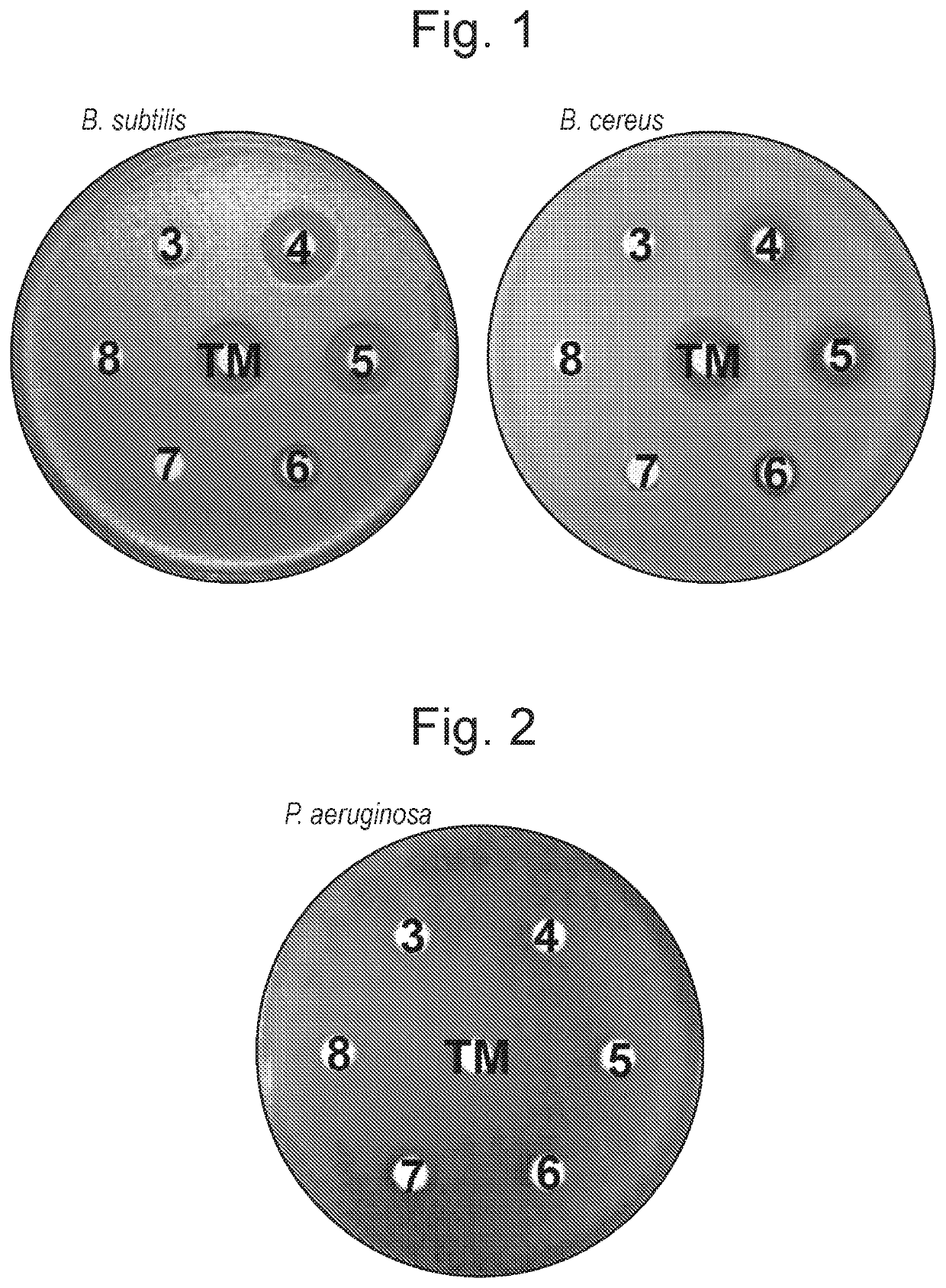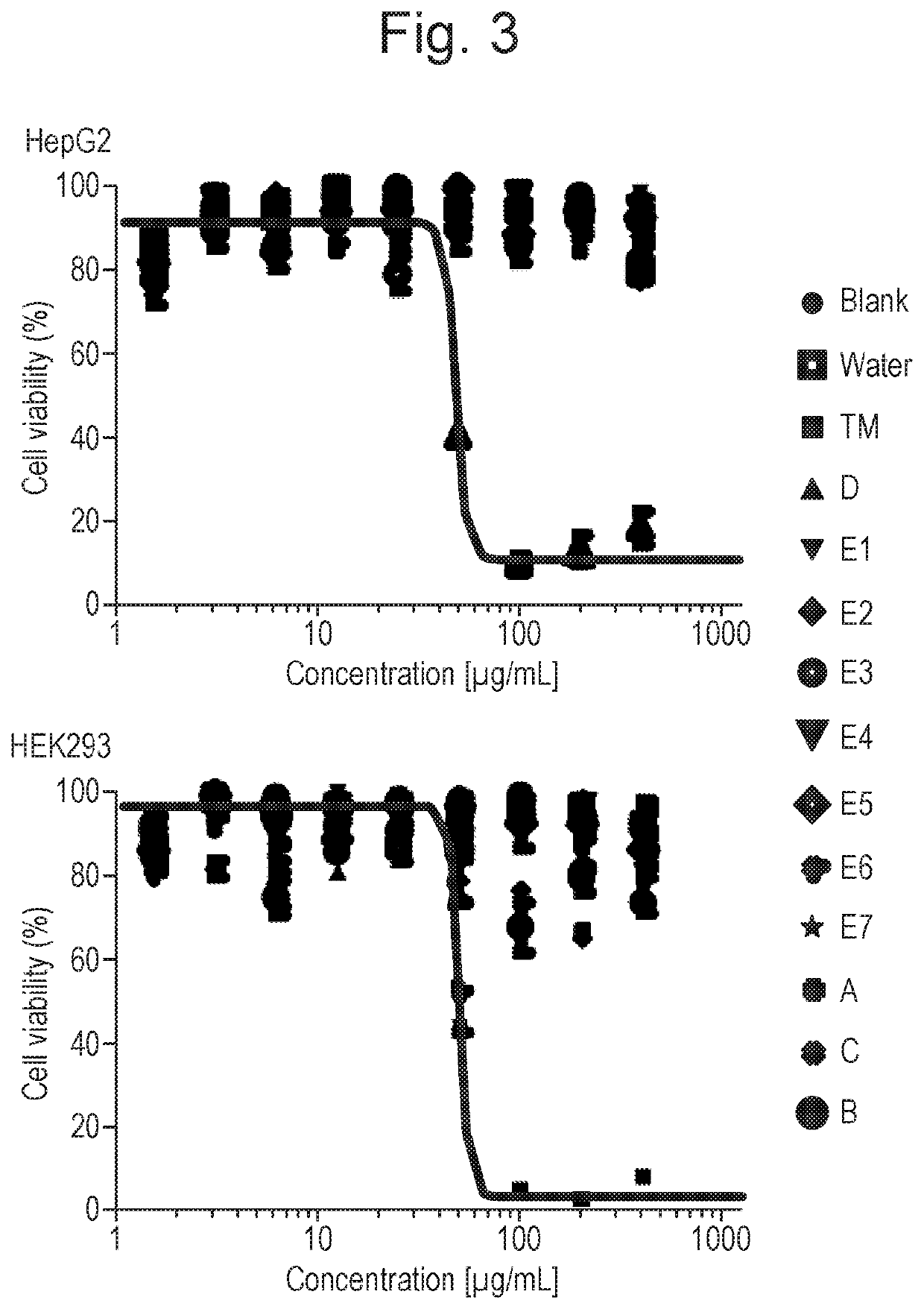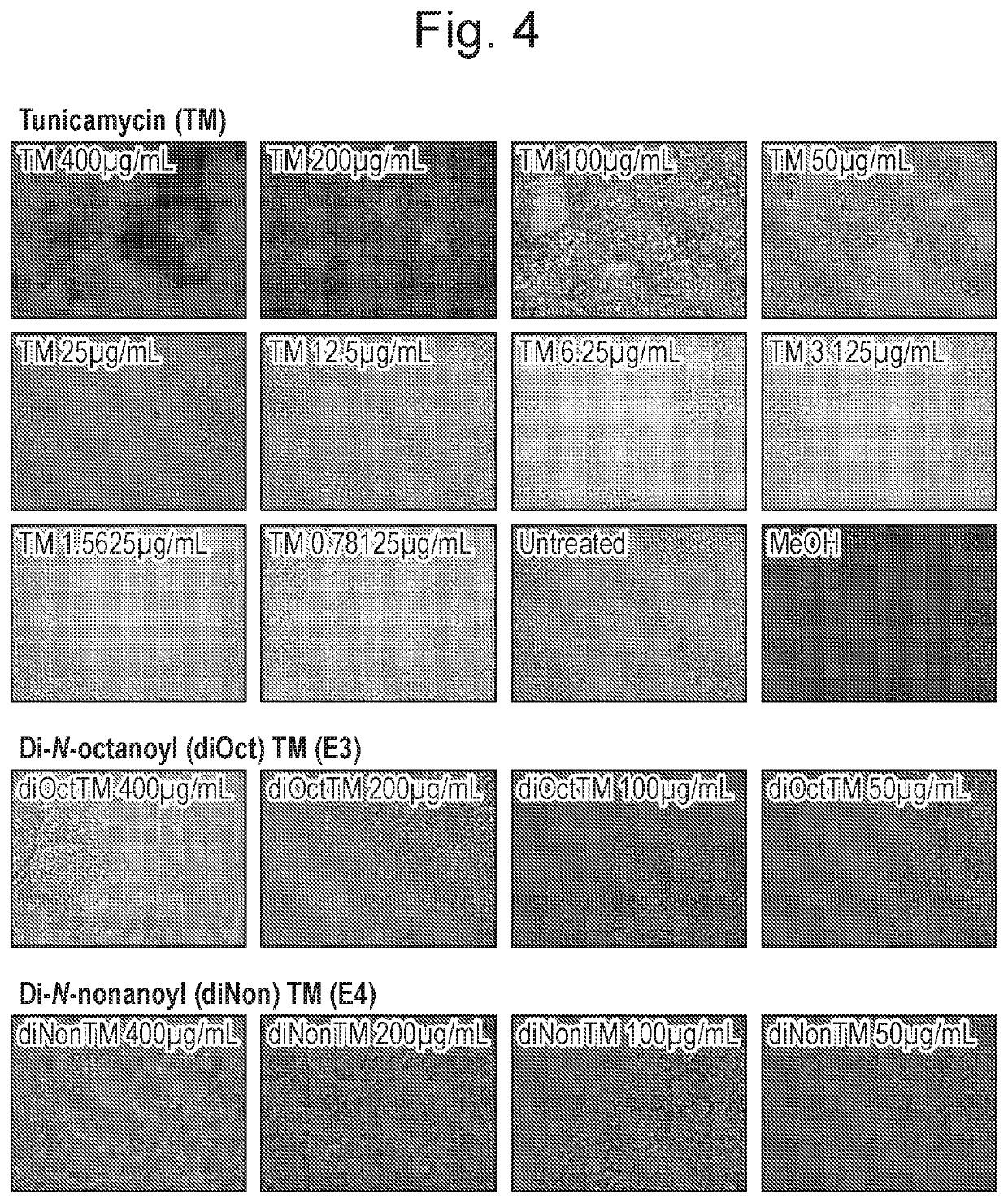Tunicamycin analogues
a tunicamycin and analogue technology, applied in the field of lipid-altered tunicamycin analogues, can solve the problems of no clinically approved antibiotics which target mray, shrinking the current range of effective antibiotics, and high toxic to eukaryotic cells, and achieves minimal cytotoxicity and enhanced potency against pathogenicity.
- Summary
- Abstract
- Description
- Claims
- Application Information
AI Technical Summary
Benefits of technology
Problems solved by technology
Method used
Image
Examples
example 1
of Lipid-Altered Tunicamycin Analogues
[0104]Lipid modified tunicamycin derivatives E1 to E7 and underlying scaffold compounds A to D were synthesized.
[0105]
[0106]The following semi-synthetic scheme illustrates the reaction processes detailed below.
[0107]
Tunicamycin (TM, 1)
[0108]Crude tunicamycin (TM) was isolated from S. chartreusis NRRL3882 fermentation culture by methanol extraction. Optimised growth and extraction processes allowed yields of 42±5 mg per litre of culture.
[0109]In one example, crude tunicamycin was isolated from a S. chartreusis NRRL3882 fermentation culture by methanol extraction (Hamill, 1980; Takatsuki et al., 1971). S. chartreusis spore stock (2 μL) was added to 50 mL of TYD media in a 250 mL spring coiled flask, and incubated at 28° C. and 200 rpm in a New Brunswick Series 25 shaker. After 36 h, aliquots of this culture (12×2 mL) was added to 12×1 L of TYD media including 6 g of glucose and 0.3 g of MgCl2 in unbaffled 2 L conical flasks, which were subsequentl...
example 5
tion of Cytotoxicity of Lipid Altered Tunicamycin Analogues and Underlying Scaffolds in Human Liver Cells and in Human Kidney Cells
[0164]Underlying scaffolds A, B, C and D and lipid-varied analogues E1 to E7 were assayed for cytotoxicity towards human liver cells (Hep2G) and human kidney cells (HEK293). Following administration of the relevant compound (A, B, C, D, or any of E1 to E7), cells were examined both by analysis of the resulting proliferation dose response curve and by analysis of any morphological changes by microscopy.
HepG2 and HEK293 Cell Culture.
[0165]Mammalian cells were cultured in DMEM medium supplemented with 10% heat inactivated fetal bovine serum (FBS, v / v). The cultures were maintained in a humidified incubator at 37° C. in 5% CO2 / 95% air. FBS was reduced to 2% for the cell proliferation assay.
Cell Proliferation Assay
[0166]In sterile 96-well plate, each well was seeded with 1×105 cells. The cells were then grown confluent overnight in 100 μL DMEM with 10% FBS. T...
example 7
inetic / Pharmacodynamics (PK / PD) Studies on Intraperitoneal (IP) Injections
[0173]After extensive solubility testing a suitable formulation was found for the tunicamycin analogues. The formulation includes 90% phosphate-buffer-saline (PBS) at pH=7.3, 10% ethanol, with 1% Tween-80 surfactant added to the final mixture. This formulation is suitable for solubility of up to 1.5 mg / mL of the compounds.
[0174]A single-dose PK study was done using 16 mice at a dose of 30 mg / kg for the TM-8 analogue, di-N-octanoyl-tunicamycin. This gave the PK curve shown in FIG. 5. The compound was easily detectable 6 hours after the injection, with some detectability. This study confirmed that the formulation was suitable for injections, and the drug is stable enough in physiological conditions.
PUM
| Property | Measurement | Unit |
|---|---|---|
| wt % | aaaaa | aaaaa |
| pH | aaaaa | aaaaa |
| pH | aaaaa | aaaaa |
Abstract
Description
Claims
Application Information
 Login to View More
Login to View More - R&D
- Intellectual Property
- Life Sciences
- Materials
- Tech Scout
- Unparalleled Data Quality
- Higher Quality Content
- 60% Fewer Hallucinations
Browse by: Latest US Patents, China's latest patents, Technical Efficacy Thesaurus, Application Domain, Technology Topic, Popular Technical Reports.
© 2025 PatSnap. All rights reserved.Legal|Privacy policy|Modern Slavery Act Transparency Statement|Sitemap|About US| Contact US: help@patsnap.com



